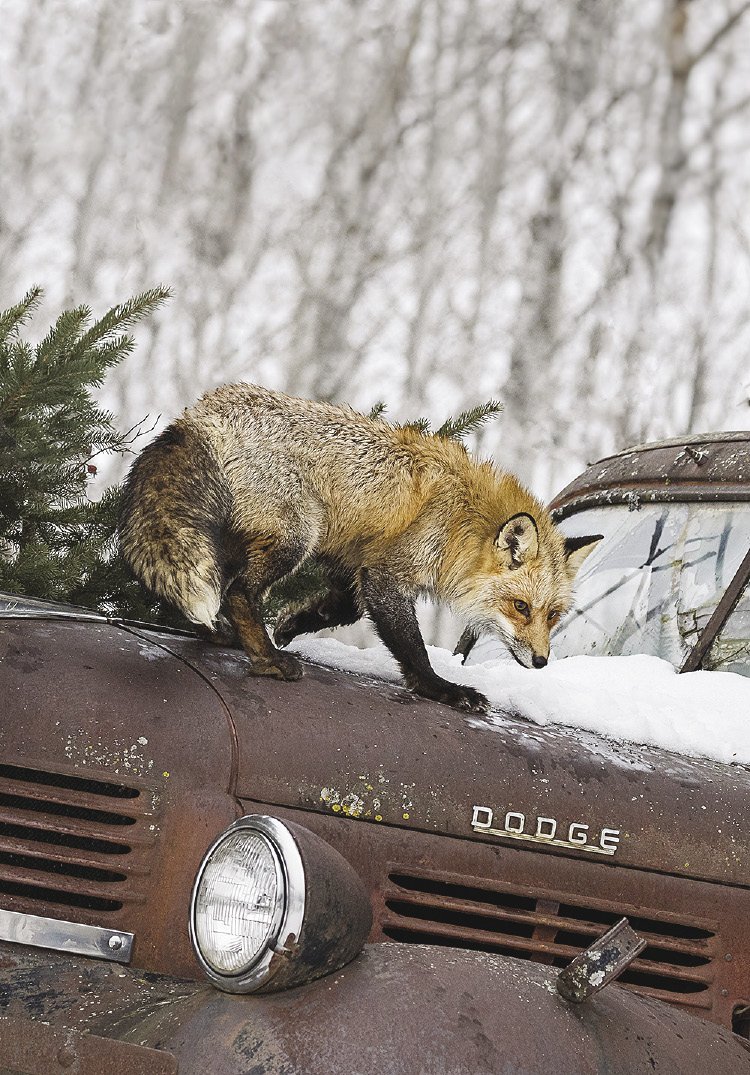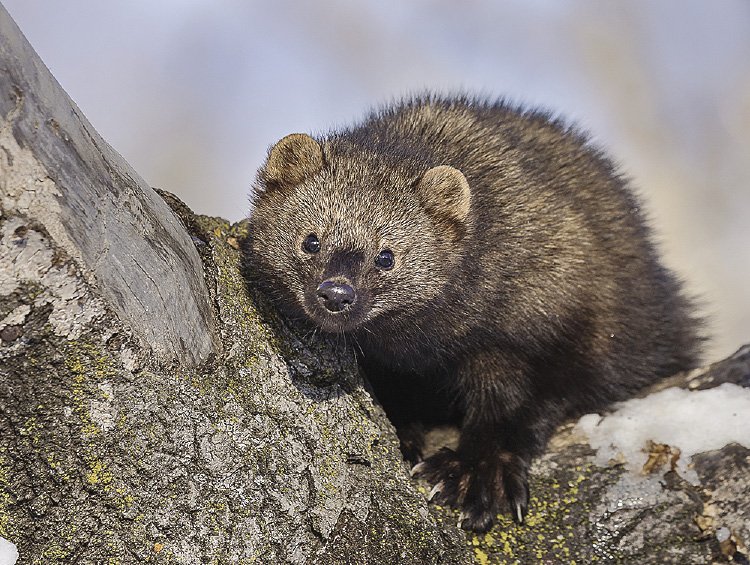“When the Creator, we call him Gitchie Manitou, put man on this Earth, he walked, and he was lonely. It was Ma’iingan that walked with him and kept him company. We always believed that what happens to Ma’iingan is going to happen to us. In the same way, what happens to us is going to happen to Ma’iingan because we walked that path together.”
—Mike Swan, White Earth Nation, Minnesota, as related in The Handbook of Communication in Cross-cultural Perspective
SHARING SPACE WITH WILDLIFE
While wolves are among the more untamed wild species that share space with us, or we with them, the list is long—and increasing. Red foxes, black bears and other species now live cheek-by-jowl with humans on the outskirts of—and in—cities, towns and villages.
These animals are in fact our neighbors, believes Minnesotan John Henricksson, author of the book A Wild Neighborhood. The word neighbor harkens back to the early days of dictionaries, he writes, with definitions like near dwellers and borderers. Our wild neighbors’ presence reaches from countryside to city square.
WILDLIFE NEAR CITIES AND SUBURBS
For the first time in history, most humans live in urban/suburban areas; more than three billion people reside in or near cities around the world. As we’re moving into town, wildlife is right behind us—or we’re behind them, sometimes claiming turf they’d already staked out.
In Maple Grove, Minn., a family of red foxes set up residence outside a human family’s front door, blocking the entrance to the house. The homeowners opted to cede the front walk to the foxes.
As cities grow, humans are removing natural habitats. With the loss of undeveloped landscapes, urban and suburban areas are becoming more important for animals from coyotes to bobcats. Scientists call them urban adapters.
Urban adapters are often found where they can forage in trash, vegetable gardens and other resources humans provide. Much of their success comes from their diets; they’re far from picky eaters.
Along with abundant food sources in towns and cities, the elimination of large predators has given smaller animals free rein. When populations of apex predators such as cougars and wolves decrease, animals like red foxes and coyotes often increase.
Just west of the Twin Cities, families in Victoria regularly come eye-to-eye with coyotes loping through their yards. One homeowner believes a coyote snatched her small dog; so far, however, there’s no proof of the coyote’s guilt.
The definition of an urban adapter isn’t clear-cut, and is changing with urban sprawl. Black bears, once symbols of wilderness, are becoming urban adapters.

In Minnesota, black bear range follows that of the state’s northern forests—or once did. Now bears are frequently reported far to the south. Last spring, stunned residents of Burnsville, a suburb of Minneapolis, watched as a black bear sauntered past their living room window and rested against a tree on the front lawn. The window-shopping bear eventually moved on.
To find out how many black bears are wandering outside their usual northern stomping grounds, Dave Garshelis, a bear biologist at the Minnesota DNR, and colleagues designed a website where the public can report bear sightings.
“We’re hoping to learn how far bears have moved from their primary range,” Garshelis says.
So far, more than 1,000 reports show the state’s black bear range is slowly expanding southward and westward.
The same could be said of Minnesota’s gray wolf range.
A WILD KNOCK ON THE DOOR
“Biologically, wolves can and will live almost anyplace people will tolerate them, and that varies with local culture and politics,” says wolf biologist Dave Mech of the U.S. Geological Survey and the University of Minnesota-Twin Cities.
In the spring of 2015, grey wolves showed up near Isanti, Minn., 45 minutes from downtown Minneapolis. It’s the farthest south in the state a wolf pack has been found, Mech says. The wolves thrived on the area’s abundant deer, and had a litter of pups.
As the Isanti pack grew, their human neighbors started reporting problems to wildlife officials. The wolves killed domestic animals, city residents claimed. The U.S. Department of Agriculture’s Wildlife Services Division, which has the authority to respond to reports of “problem wildlife,” removed some of the wolves.
Isanti resident Larry Hogie digs soil from ponds on his property, which he forms into mounds of dirt for sale to gardeners and horticulture centers. One day Hogie glanced at the edge of the woods near his home…and into the eyes of a grey wolf. “Like any other animal,” he says, “wolves like to be where they can see what’s going on, so they’ve been sitting on top of my dirt mounds.”
PATH TO COEXISTENCE
In areas where wolves and other predators might prey on livestock, installing electric fences and employing livestock-guarding dogs can facilitate coexistence, scientists say.
As more and more homeowners raise chickens and keep goats, carnivores are increasingly viewing backyards as restaurants. And each year, more wildlife is killed by homeowners protecting livestock from predators. That isn’t a sustainable approach to managing wildlife, say biologists.
Electric fencing is among the most effective means of keeping hungry wildlife like black bears out of chicken coops and other livestock areas, scientists suggest. Be responsible, they say: go electric. And take down birdfeeders by April 1, when hibernators like bears are emerging from winter dens. The bears make a beeline to birdseed, says Garshelis. Researchers also recommend keeping trash in firmly latched containers and inside garages with doors closed. Take trash to the curb just before scheduled pick-up times.
Who was here first—and will we learn to coexist? The question is being asked in Minnesota and around the globe. The answer, White Earth Nation legend might say, is that what happens to one will happen to all.





